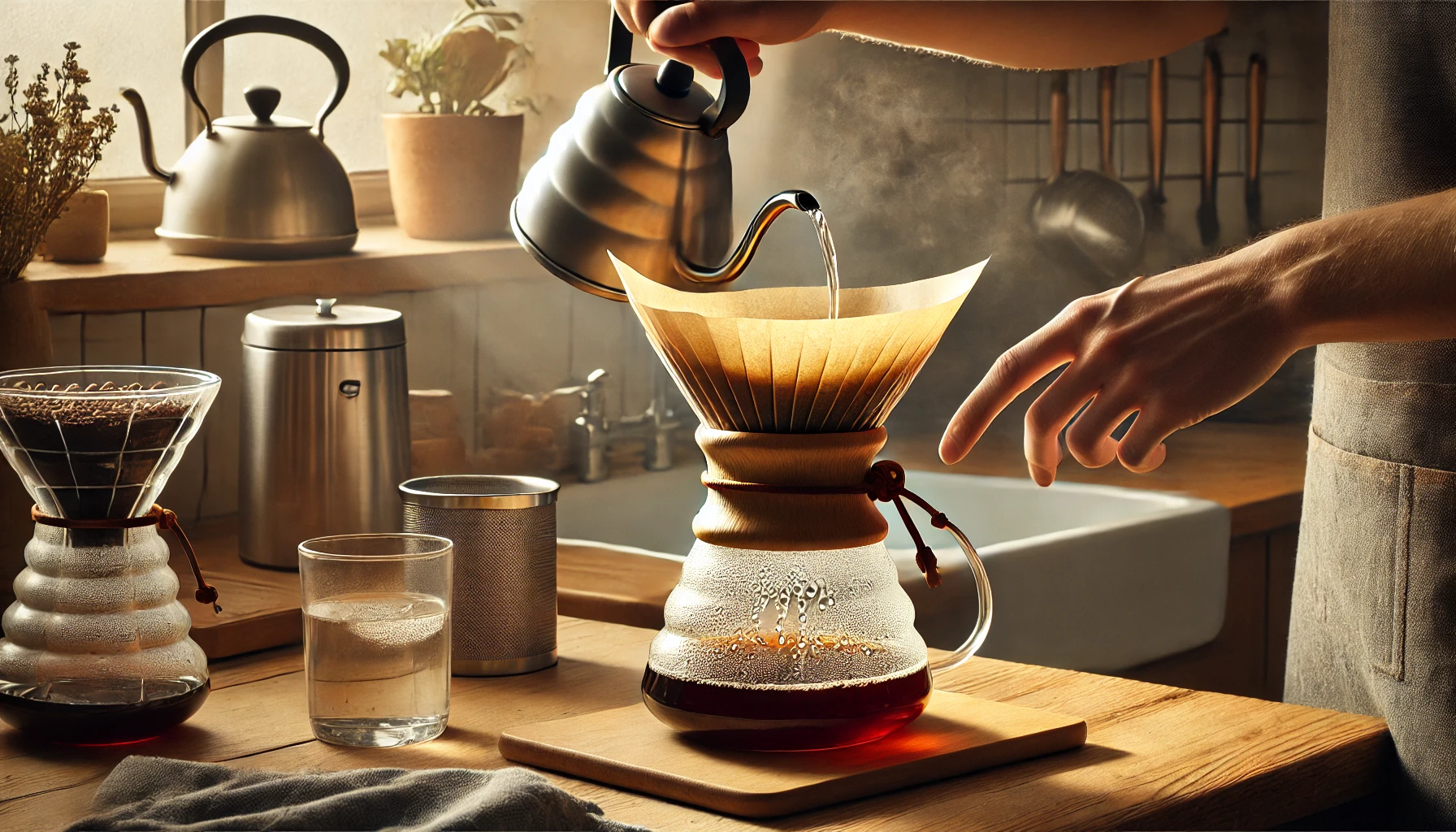If you’re into pour-over or drip coffee, you’ve probably seen some people rinse their paper filters before brewing — and maybe wondered: Is that really necessary?
The short answer? Yes.
Rinsing your coffee filter can make a noticeable difference in the flavor of your brew — especially if you’re using unbleached paper filters or trying to highlight subtle tasting notes in high-quality beans.
In this article, you’ll learn why rinsing your filter matters, when it’s worth doing, and how to do it the right way.
What Happens If You Don’t Rinse the Filter?
Most paper coffee filters, especially the brown (unbleached) ones, contain residual paper fibers and flavor compounds from the manufacturing process. When you brew coffee without rinsing:
- These fibers and chemicals mix into your coffee.
- You may taste a papery, cardboard-like flavor in the final cup.
- It can mute or mask delicate notes in specialty beans.
While it won’t necessarily ruin your coffee, skipping the rinse step means missing out on the cleanest, purest flavor.
Benefits of Rinsing Your Coffee Filter
Let’s break down the specific benefits of taking 10 seconds to rinse your paper filter:
1. Removes Paper Taste
- This is the most obvious reason.
- Especially important with unbleached filters, which are more “raw.”
2. Warms Up the Equipment
- Rinsing with hot water helps preheat your dripper or carafe.
- A warm brewing vessel keeps water temperature stable for better extraction.
3. Ensures Better Water Flow
- Rinsing settles the filter in place and prevents it from sticking to the sides.
- A properly seated filter allows more consistent flow, improving even saturation.
4. Improves Overall Clarity and Flavor
- Removing impurities from the filter allows the true coffee flavors to shine.
- Especially noticeable with light roasts or single-origin beans.
When Should You Rinse the Filter?
You should rinse before brewing, but here are a few specific cases where it’s especially important:
- Using unbleached filters (brown paper)
- Brewing high-quality or specialty coffee
- Preparing light to medium roasts, which are more delicate
- Using pour-over methods like V60 or Chemex
If you’re using bleached white filters, the impact is smaller, but still noticeable to sensitive palates.
How to Rinse a Coffee Filter (Step by Step)
It only takes a few seconds. Here’s how:
- Place the filter in your dripper (V60, Chemex, etc.).
- Pour hot water through the filter, wetting all sides.
- Let the water drain completely into your cup or carafe.
- Discard the rinse water — don’t brew your coffee over it!
Bonus tip: Use the rinse water to preheat your mug before brewing.
What About Metal or Cloth Filters?
Metal filters (like stainless steel mesh) don’t need rinsing for taste — but it’s good practice to rinse them for hygiene and remove any lingering coffee oils.
Cloth filters, however, should be rinsed and stored properly after every use. They can absorb flavors and need more care to stay clean.
Is It Ever Okay to Skip Rinsing?
Sure — if:
- You’re using a machine with a built-in filter holder and want to save time.
- You’re brewing very dark roast coffee, where bold flavors overpower paper taste.
- You’re not sensitive to subtle flavors and prefer convenience over perfection.
But if your goal is better-tasting coffee, rinsing is one of the easiest habits to adopt.
Final Drip: Small Step, Big Flavor
Rinsing your coffee filter may seem like a minor detail, but it’s one of those small rituals that separates “okay” coffee from exceptional coffee. It takes just a few seconds and enhances clarity, flavor, and balance — especially when working with quality beans and manual brewing methods.
So next time you’re making your pour-over or drip coffee, take a moment to rinse that filter.
Your taste buds will thank you.
